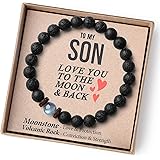Amazon Echo Dot (newest model), Vibrant sounding Alexa speaker, Great for bedrooms, dining rooms and offices, Charcoal
$34.08 (as of February 17, 2025 12:49 GMT +00:00 - More infoProduct prices and availability are accurate as of the date/time indicated and are subject to change. Any price and availability information displayed on [relevant Amazon Site(s), as applicable] at the time of purchase will apply to the purchase of this product.)Ello Cooper 22oz Stainless Steel Water Bottle with Straw and Carry Handle, Double Walled and Vacuum Insulated Metal, Leak Proof Locking Lid with Soft Silicone Spout, Reusable, BPA Free, Yucca
$8.79 (as of February 17, 2025 12:49 GMT +00:00 - More infoProduct prices and availability are accurate as of the date/time indicated and are subject to change. Any price and availability information displayed on [relevant Amazon Site(s), as applicable] at the time of purchase will apply to the purchase of this product.)Ring Indoor Cam (2nd Gen) | latest generation, 2023 release | 1080p HD Video & Color Night Vision, Two-Way Talk, and Manual Audio & Video Privacy Cover | White
$39.99 (as of February 17, 2025 12:49 GMT +00:00 - More infoProduct prices and availability are accurate as of the date/time indicated and are subject to change. Any price and availability information displayed on [relevant Amazon Site(s), as applicable] at the time of purchase will apply to the purchase of this product.)Ring Stick Up Cam Battery | Weather-Resistant Outdoor Camera, Live View, Color Night Vision, Two-way Talk, Motion alerts, Works with Alexa | White
$44.99 (as of February 17, 2025 12:49 GMT +00:00 - More infoProduct prices and availability are accurate as of the date/time indicated and are subject to change. Any price and availability information displayed on [relevant Amazon Site(s), as applicable] at the time of purchase will apply to the purchase of this product.)THEMEROL Valentines Gifts for Him Teen Boys Gift Ideas Teenage Boys Gifts Men Easter Basket Stuffers Beaded Bracelets Son 14 16 18 Year Old Birthday Confirmation Cool Unique Christmas Stocking Day
$14.99 (as of February 17, 2025 12:49 GMT +00:00 - More infoProduct prices and availability are accurate as of the date/time indicated and are subject to change. Any price and availability information displayed on [relevant Amazon Site(s), as applicable] at the time of purchase will apply to the purchase of this product.)When it comes to printing documents, photographs, or artwork, using the right type of paper is crucial to achieve professional-looking results. With so many options available in the market, selecting the ideal printer paper can be overwhelming, especially for those who are new to printing.
In this article, we will delve into the world of printer papers, exploring their types, characteristics, and uses. We’ll also provide you with a comprehensive guide on how to choose the right paper for your specific needs.
Types of Printer Papers
Printer papers come in various types, each designed for specific purposes:
- Bond Paper: A general-purpose paper used for everyday printing tasks such as documents, letters, and reports.
- Text Paper: A high-quality paper suitable for printing text-heavy documents like novels, essays, or articles.
- Cover Stock: A heavier and more durable paper ideal for printing brochures, flyers, or other marketing materials.
- Photo Paper: A specialized paper designed specifically for printing photographs, offering vibrant colors and excellent image quality.
- Cardstock: A thick and sturdy paper used for creating business cards, invitations, or other custom projects.
Characteristics of Printer Papers
Printer papers can be categorized based on their physical characteristics:
- Weight: Measured in grams per square meter (gsm), weight affects the paper’s thickness and durability.
- Texture: Papers can have a smooth, matte, or glossy finish, which impacts print quality and appearance.
- Brightness: Measured in ISO brightness units, it indicates how much light is reflected from the paper surface.
- Opacity: Determines how well the paper resists show-through and bleed-through from underlying pages.
Uses of Printer Papers
Different types of printer papers are suited for specific applications:
- Document Printing: Bond paper or text paper are ideal for printing documents like reports, letters, or essays.
- Photography: Photo paper is specifically designed to produce high-quality images with vibrant colors and excellent detail.
- Marketing Materials: Cover stock or cardstock are suitable for creating eye-catching brochures, flyers, or business cards.
- Art Projects: Specialty papers like watercolor or textured paper can add a unique touch to artistic creations.
Choosing the Right Printer Paper
To select the ideal printer paper for your needs:
- Consider the intended use: Document printing, photography, marketing materials, or art projects?
- Think about the paper’s weight and durability: Do you need a lightweight general-purpose paper or a heavier cardstock?
- Evaluate the texture and finish: Smooth, matte, or glossy? Do you prefer a high-gloss finish for photographs or a textured look for artistic creations?
- Check the brightness and opacity: Do you require a paper that can handle heavy ink loads or one with excellent show-through resistance?
Popular Brands and Models
Some popular brands and models of printer papers include:
- HP: Offers a wide range of printer papers, including general-purpose bond paper and high-quality photo paper.
- Canon: Provides various types of printer papers, including text paper, cover stock, and specialty papers for artistic creations.
- Epson: Known for their high-quality photo paper, Epson also offers a variety of general-purpose papers and marketing materials.
Conclusion
Choosing the right printer paper is essential to achieve professional-looking results in your printing projects. By understanding the different types, characteristics, and uses of printer papers, you can select the ideal one for your specific needs. Whether you’re printing documents, photographs, or artwork, remember to consider factors like weight, texture, brightness, and opacity when making your selection.
Technical Specifications:
- Weight: 80-200 gsm
- Texture: Smooth, matte, or glossy
- Brightness: ISO brightness units (50-120)
- Opacity: Resists show-through and bleed-through from underlying pages
- Uses: Document printing, photography, marketing materials, art projects












